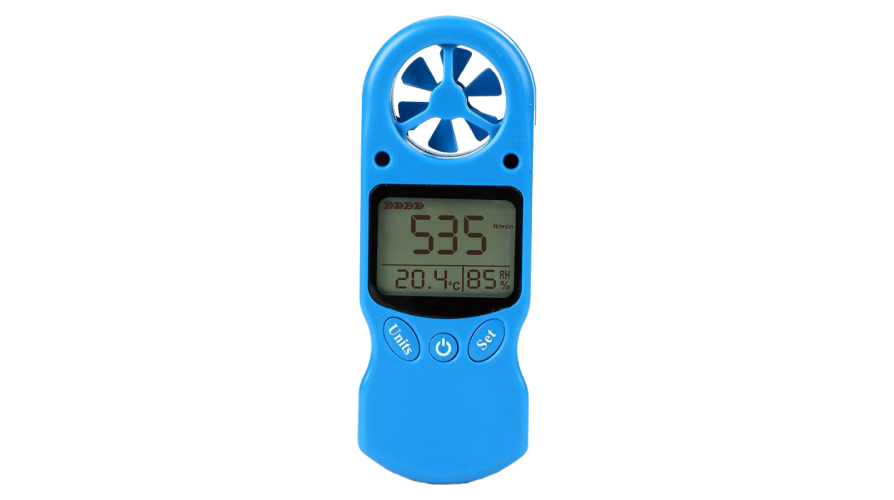Why an Anemometer is Vital for Your Environmental Information Collection
Why an Anemometer is Vital for Your Environmental Information Collection
Blog Article
Anemometers Introduced: Understanding Their Importance in Environmental Monitoring and Precaution
The role of anemometers in ecological monitoring and safety and security measures is often underestimated, yet their importance is obvious. From meteorology to aviation safety, anemometers play an essential function in supplying precise information that educates decision-making processes and enhances total security.
Background of Anemometers
The advancement of anemometers can be traced back to the ancient human beings where rudimentary wind measuring gadgets were very first made use of. One of the earliest known anemometers was the hemispherical cup anemometer developed by Leon Battista Alberti in the 15th century.
Over the years, advancements in modern technology led to the advancement of more modern-day anemometers, including ultrasonic anemometers and laser Doppler anemometers, supplying enhanced precision and efficiency in determining wind rate and direction. The background of anemometers showcases an impressive journey of development and progress in the area of weather forecasting.
Kinds Of Anemometers
Throughout the area of meteorology, different kinds of anemometers have been established to accurately determine wind rate and instructions. Sonic anemometers utilize ultrasonic signals to gauge wind speed and direction properly. Hot-wire anemometers run based on the principle that the cooling result of wind on a warmed cable is symmetrical to the wind rate.
Applications in Weather Forecasting
Having talked about the numerous sorts of anemometers used in weather forecasting for gauging wind rate and direction, it is important to discover their practical applications in the field. Anemometers play an important duty in meteorology by providing precise and real-time information on wind conditions (anemometer). Meteorologists make use of anemometers to keep track of wind rate and direction to forecast weather condition patterns, problem warnings for extreme weather condition events like tornados, tornadoes, and hurricanes, and assess climatic problems for aeronautics safety and security
In weather forecasting, anemometers aid in understanding regional and local wind patterns, which are crucial for predicting weather condition changes and identifying climatic fads. These tools are likewise used in research to research microclimates, metropolitan heat islands, and air contamination diffusion. Furthermore, anemometers are utilized in agriculture to optimize crop monitoring methods, such as irrigation and pesticide application, based upon wind conditions.
Significance in Aviation Safety And Security
An indispensable facet of making sure air travel safety hinges on the meticulous surveillance of wind problems utilizing anemometers. Anemometers play an essential role in aviation by providing real-time information on wind rate and instructions, assisting pilots in making educated choices during flight, take-off, and landing. Solid and uncertain winds can considerably impact airplane procedures, making it necessary for aviation authorities to depend on precise wind dimensions to make certain the safety of guests and team.

In the vibrant setting of air travel, where also Read More Here minor adjustments in wind speed and direction can have profound results, anemometers stand as indispensable tools for advertising secure and safe and secure air travel.
Function in Environmental Research Study
Anemometers play an important duty in ecological study by supplying necessary data on wind rate and direction. By accurately measuring wind features, anemometers aid scientists analyze the movement of pollutants in the air, assess the influence of commercial discharges, and forecast the spread of pollutants in the atmosphere.


Final Thought
To conclude, anemometers have played an important role in environmental monitoring and precaution. With a rich history and different types available, these devices have actually been extensively utilized in meteorology, aviation safety and security, and ecological research. Comprehending the relevance of anemometers is necessary for precisely determining wind speed and direction, which is important for forecasting climate patterns, guaranteeing safe aviation operations, and conducting environmental research studies - anemometer. Their payments to these areas can not be taken too lightly.
One of the earliest recognized anemometers was the hemispherical cup anemometer designed by Leon Battista Alberti in the 15th century. Over the years, improvements in technology led to the advancement their explanation of more contemporary anemometers, consisting of ultrasonic anemometers and laser Doppler anemometers, providing raised precision and performance in measuring wind rate and direction. Hot-wire anemometers run based on the concept that the cooling effect of wind on a warmed cable is symmetrical to the wind rate. Meteorologists use anemometers to monitor wind rate and direction to forecast weather patterns, concern warnings for severe weather occasions like hurricanes, tornados, and twisters, and assess atmospheric problems for aeronautics safety and security.
Understanding the relevance of anemometers is important for precisely determining wind speed and direction, which is vital for forecasting weather patterns, making certain risk-free aeronautics procedures, and conducting environmental researches. (anemometer)
Report this page